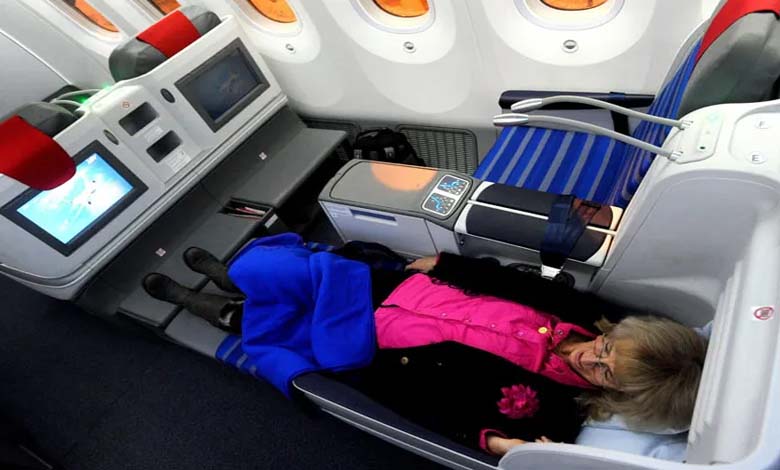How to Protect Yourself from Blood Clots While Flying?

The risk of developing blood clots while flying is a significant concern, especially due to the lack of appropriate medical facilities available on board. This issue has gained considerable attention from health professionals and aviation experts alike, as blood clots, also known as thrombosis, can lead to severe complications if left undiagnosed or untreated during a flight. The nature of air travel, with its long durations, low humidity levels, and confined spaces, creates an environment that is far from ideal for maintaining optimal health and circulation.
Dr. Olga Verba, who serves as the President of the Russian Association of Aviation Medicine Doctors, recently highlighted these concerns in an interview with the Russian news outlet Gazeta.ru. She explained that blood clots are one of the primary issues that aviation medicine seeks to address. The unique conditions that passengers face while flying, such as fluctuating cabin pressure, dry air, and the need to remain seated for long periods, can all contribute to poor blood circulation. These factors can be particularly problematic for certain individuals who are already at a higher risk of developing thrombosis, making it a serious issue for air travelers to be aware of.
“Blood clots are one of the most significant concerns in aviation medicine. Pressure fluctuations, dry cabin air, and prolonged sitting in the same position can negatively affect blood circulation, especially in high-risk individuals,” Dr. Verba explained. She emphasized that these factors can lead to significant health issues if precautions are not taken during air travel.
-
Heart Health: 7 foods that this cardiologist always includes in his shopping list
-
Winter fruits and vegetables: our tips to boost their benefits
In her interview, Dr. Verba elaborated on the specific groups of people who are most susceptible to developing blood clots while flying. She pointed out that individuals with underlying cardiovascular conditions are at a higher risk, as are pregnant women, women who are taking oral contraceptives, and even athletes who may be dehydrated after intense physical exertion or competitions. These conditions, combined with the effects of flying, can lead to a dangerous increase in the viscosity of the blood, which in turn raises the risk of clot formation. “All these factors increase blood viscosity, making it essential to monitor these indicators,” Dr. Verba warned.
Given the serious nature of the risk, Dr. Verba provided several practical recommendations to help reduce the likelihood of developing blood clots during a flight. One of the most important measures she suggested is staying hydrated throughout the flight. “Drinking plenty of water” helps maintain healthy blood circulation and reduces the likelihood of dehydration, which can contribute to the formation of blood clots. Passengers should be encouraged to drink water regularly, particularly during long flights where dehydration is more likely.
-
Study: Controlling Blood Pressure Protects Against Dementia
-
This “Affordable” Device Detects Cancer with a Drop of Blood
Another key piece of advice from Dr. Verba is to wear loose and comfortable clothing during air travel. Tight clothing can restrict blood flow, particularly in the lower limbs, which may increase the likelihood of clot formation. By opting for comfortable attire that does not constrict movement, passengers can help promote better circulation during their time on the plane.
Regular movement is also crucial in preventing the formation of blood clots. Dr. Verba recommends that passengers take every opportunity to move during the flight. This can be achieved by performing simple foot exercises, such as flexing and rotating the feet, or by walking up and down the airplane aisle when it is safe to do so. These movements stimulate blood flow, helping to keep the circulation active and reduce the chances of clot formation in the veins and arteries. “Moving regularly, either by exercising foot movements or walking down the airplane aisle to stimulate blood circulation” is essential for reducing thrombosis risk during long flights.
In addition to these practical measures, Dr. Verba also advises air travelers to pay attention to their diet during a flight. She recommends eating light meals that are rich in vegetables and fruits high in water content, as these foods are not only nutritious but also help keep the body hydrated. On the other hand, passengers should avoid consuming foods that could increase the viscosity of their blood. Fatty foods, processed snacks, and high-sodium options should be minimized, as these can contribute to dehydration and poor circulation, further increasing the risk of blood clot formation.
Dr. Verba’s advice extends beyond diet and hydration. She also highlights the importance of ensuring comfort while seated. Passengers should avoid tightening their seat belts too much, as this can restrict blood flow, particularly around the abdomen and legs. Instead, it is advisable to sit in a relaxed, comfortable position and adjust the seat and seatbelt as needed to improve comfort without restricting circulation. This may seem like a minor adjustment, but it can play a key role in reducing the likelihood of blood clot formation during long flights.
-
Including Bananas: Potassium-Rich Foods That Control Blood Pressure
-
5 Steps to Lower High Blood Pressure
Furthermore, passengers should refrain from consuming alcohol or certain medications that can have adverse effects on blood circulation. Alcohol can contribute to dehydration, which, as mentioned earlier, can increase the risk of developing blood clots. Additionally, some medications, such as those that affect blood thinning or circulation, may have side effects that heighten the risk of thrombosis during flight. It is essential for passengers to be mindful of the substances they ingest during their flight and to consult with a healthcare provider if they have concerns about how their medications may interact with flying conditions.
In conclusion, the risk of blood clots during air travel is a serious issue that deserves attention, particularly for individuals with pre-existing health conditions. By understanding the factors that contribute to thrombosis and taking preventive measures, passengers can significantly reduce their risk of experiencing blood clots during their flight. Staying hydrated, wearing comfortable clothing, moving regularly, eating light meals, avoiding alcohol and certain medications, and ensuring proper posture are all simple yet effective ways to promote healthy circulation while flying. These steps can help make air travel safer and more comfortable for everyone, reducing the likelihood of blo












